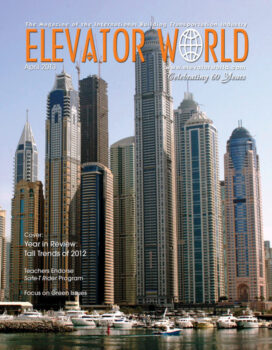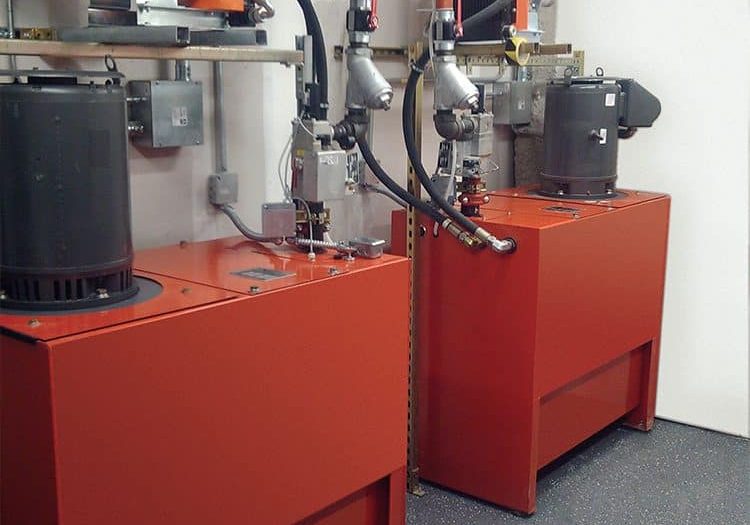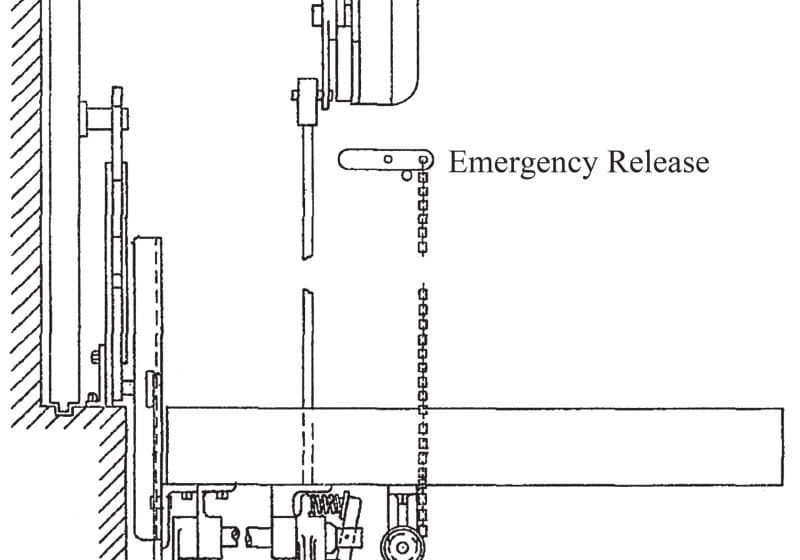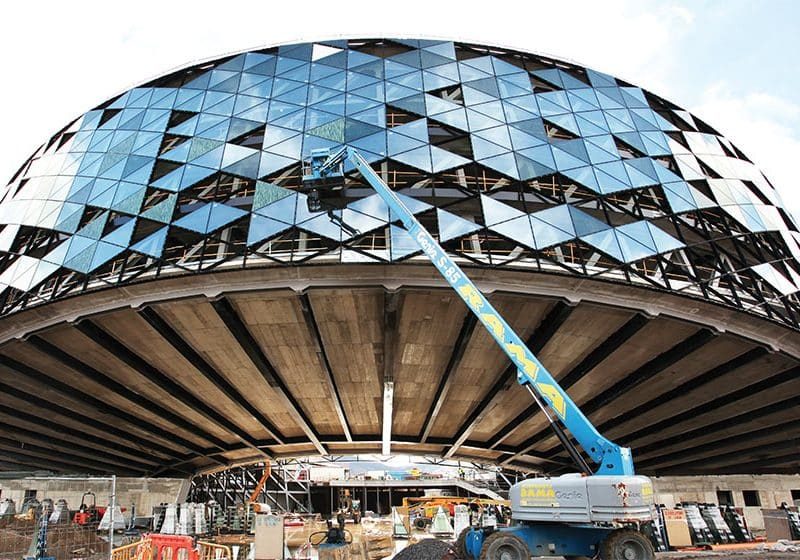by Dieter Roas
While building owners in Germany must furnish proof of the energy efficiency of their buildings, the same does not necessarily apply to technical building equipment. A lift, for example, can consume up to 7% of a building’s total power consumption. However, neither the European Union Directive on the Energy Performance of Buildings, nor the German Energy Saving Ordinance (Energieeinsparverordnung, EnEV) include requirements for reducing consumption of electricity. Given the increasing importance of economic, ecological and social sustainability, the lift industry took action and worked with testing and inspection organizations and the Association of German Engineers to launch the guideline VDI 4707 Part 1: “Lifts – Energy efficiency.” Several lifts have already been certified.
Presently, guideline VDI 4707 describes the only standardized procedure for identifying the energy demand of a lift, which is a prerequisite for the energy-efficiency label. Current certification processes are carried out in accordance with Part 1: “Lifts – Energy efficiency” (edition 2009-03). The procedure established in this part classifies the complete lift system, depending on its category of use and energy demand in both standby mode and during travel operation. The new Part 2 of the guideline aims to enable the classification of individual components on the basis of their energy efficiency.
Part 1 provides architects, developers and building owners with guidance for assessing the energy need and cost effectiveness of their lift systems. Lift operators can reduce the cost of lift operation by using maintenance measures to unlock hidden potential for energy savings. As for household appliances and building-services equipment, the guideline defines energy-efficiency classes from A to G. An important aspect in this context is that classification in accordance with VDI 4707 only applies to the lift in the specified category of use. TÜV SÜD Industrie Service GmbH was the only third-party testing and certification organization to be proactively involved in the development of the guideline VDI 4707. Today, TÜV SÜD is a global leader in testing and certification of lifts in accordance with guideline VDI 4707, is familiar with the requirements of lift operators and has experience with various lift types and manufacturers.
In the planning phase, architects have diverse possibilities of intervention to ensure the integration of an energy-efficient lift system that matches the concept of the building. It is important in this context that architects emphasize the lift’s usage profile within the scope of tendering. These benchmark values (times of travel operation and standby mode) will form the basis of the energy-efficiency class. After the category of use has been defined, the most suitable lift in terms of usability and energy-efficiency class, along with the associated certificates, can be installed.
Three Steps of Energy-Efficiency Identification
The lift is certified by a third-party testing and certification organization for the implementation of the VDI guideline. Certification is possible for both new and existing lift systems. Identification of a lift’s energy demand implies three steps:
- Identification of the category of use
- Determining standby demand
- Determining travel demand
Depending on the situation in which the lift will be used, the results of the three steps will be weighted differently. The less a lift is used, for example, the more important its energy consumption in standby mode. The results of all three steps are compared to the reference values of guideline VDI 4707 Part 1. Then, the lift is assigned to the appropriate class of energy efficiency.
Classification into a Category of Use
Depending on its travel time and number of travel cycles per day, the lift is assigned to one of five categories of use, from 1 (minimum use) to 5 (maximum use). Other factors by which the category of use can be determined are the mean standby time in hours per day, and typical buildings and use. Buildings, for example, range from category 1 (for residential buildings with up to six flats) to category 5 (designating office complexes more than 100 m in height in which lifts are in travel mode for more than 4.5 hr. per day). The average time in travel operation, given in hours per day, for example, can be determined from mean number of travel operations and the mean duration of travel.
Determination of Standby Demand
Step two analyzes the standby demand. For this purpose, all components necessary to keep the lift ready for operation are recorded. In this context, experts look at aspects including the energy consumed by the cabin lights, cabin door (motor) and cabin fan. To calculate the standby demand, the individual consumption values are measured and added up roughly 5 min. after the lift completes its last trip. Standby demand is divided into energy-demand classes, ranging from class A (up to 50 W) to class G (more than 1,600 W).
Determination of Travel Demand
The travel demand comprises a lift’s total energy demand during operation. Calculation of the travel demand is based on energy consumption, weight and travel height. A defined test cycle delivers precise and comparable data. A test cycle includes a reference trip over the entire travel height with an empty cabin traveling upward and downward, including opening and closing of the door. Here, energy consumption is broken down into energy-efficiency classes. Example: A lift in category of use 1 with an energy consumption of 2.21 mWh/(kg X m) or less in the test cycle is assigned to energy-efficiency class A. By contrast, a lift with an energy consumption of more than 57.09 mWh/(kg X m) in the test cycle would be assigned to class G, the class of lowest energy efficiency.
Potential for Energy Savings
Standby phases offer particularly high potential for energy savings. The main reason for this is that in the case of lifts, the average standby period is three times higher than the average travel time. In residential buildings, for example, lifts consume around 70% of their annual energy demand in standby mode – the major consumers being the cabin lights and fan.
In these cases, substantial savings can be realized by installing an intelligent lift control system, a preprogrammed standby mode or energy-efficient lift lighting. One possibility, in addition to the use of energy-saving light bulbs or LEDs, is the automatic deactivation of the cabin light. In this case, the cabin lights are automatically deactivated at a defined period after the last call and are only reactivated at the next call. Automatic deactivation of the cabin fan and power consumers of the cabin access (i.e., the cabin doors) can be used in the same manner.
In office buildings where lifts are used more frequently, standby phases still account for as much as 40% of the lifts’ annual power consumption (i.e., a far smaller proportion than in residential buildings). While an intelligent standby mode makes good sense here, too, energy recovery during travel operation may unlock more potential for energy savings. Basically, energy-efficiency considerations should take into account the entire lifecycle of equipment, starting with lift planning and design; selection of energy-efficient components and their intelligent control; and consideration of energy-efficiency aspects in lift installation, operation and maintenance.
Tailored Modernization
The possibilities of improving energy efficiency within the scope of modernization of existing lift systems range from the renewal or replacement of individual components, to replacing the entire lift system. Main areas of improvement include the drive systems and electricity supply for lift components, lights and fan. Third-party certification in accordance with guideline VDI 4707 ensures the right leverage is applied, helping lift owners avoid the installation of over- and undersized components on the one hand, and aligning individual components to the special features of their lift systems on the other.
Flexible Lift-Shaft Ventilation
In order to remove smoke from the lift shaft in the case of fire, the top of the lift shaft in existing lift systems incorporates a permanently open vent for smoke ventilation. As this vent represents a permanent heat drain because of the chimney effect, it has been prohibited since the German Energy Saving Ordinance was introduced in 2009. This measure, while reducing energy loss, involves a higher safety risk for users. A flexible lift-shaft smoke vent and ventilation system provide safety and are easy to install, even in existing lifts. TÜV SÜD has developed a simulation program for residential and commercial buildings that can be used for exact determination of the energy savings achieved with this measure. The simulation program accurately calculates the reduction in heating costs and carbon emissions.
Get more of Elevator World. Sign up for our free e-newsletter.









